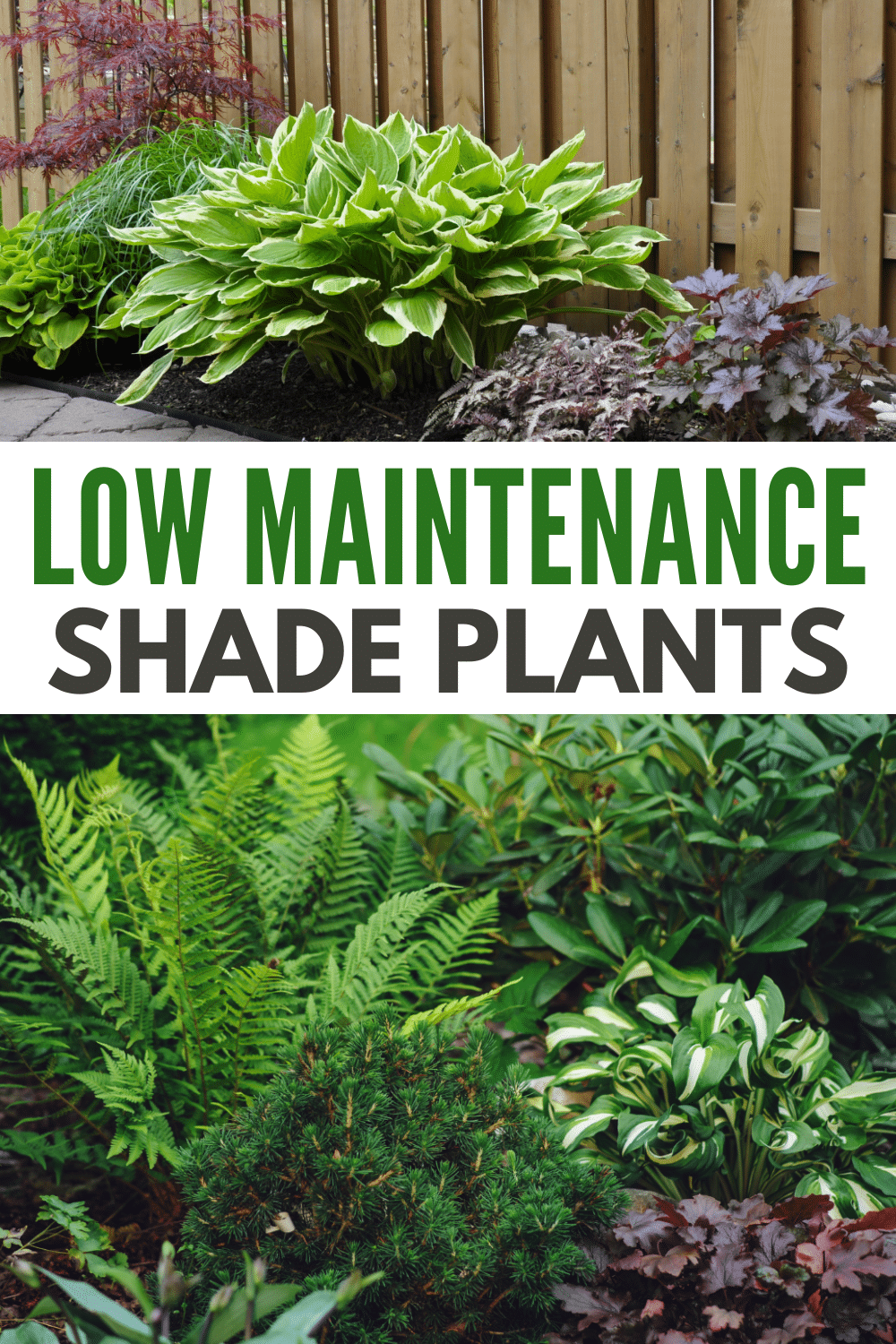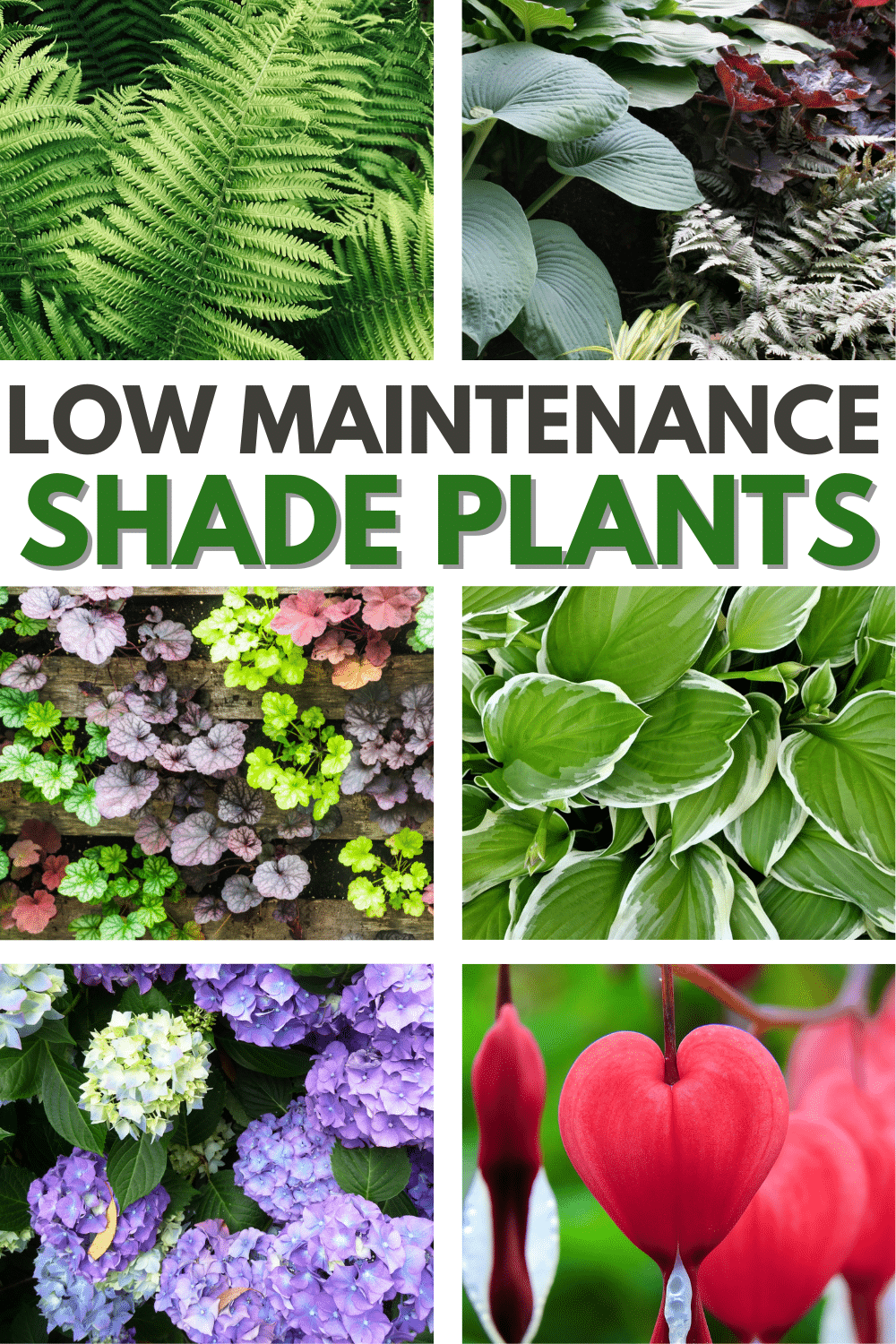Low Maintenance Shade Plants will help you have the garden space you want even if your yard has lots of shade or partial shade. Having a shady garden shouldn’t be a barrier between you and the landscape you dream of.
There are plenty of low-maintenance plants that prefer hiding in shaded areas. So, even if shadows cover your entire lawn, you’ll have no problem filling it up with stunning foliage, unique flowers, and vibrant colors.
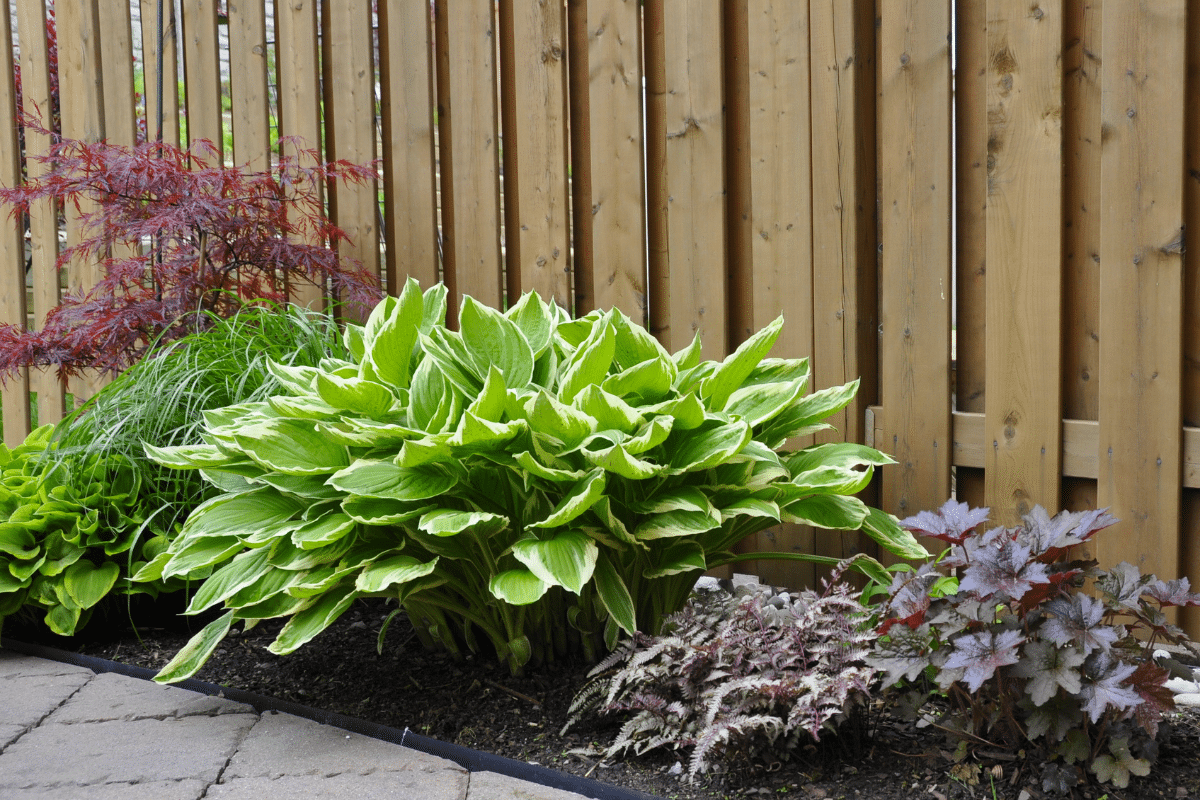
Never have an empty corner in your garden due to insufficient sunlight ever again!
Jump to:
Benefits Of Using Shade Perennials In Your Garden
Incorporating plants that thrive in the shade into your garden has numerous advantages beyond their visual appeal. Sure, their aesthetics played a big factor in urging me to add shade perennials to my landscaping, however, their practical benefits are equally noteworthy.
No Garden Spot Left Behind
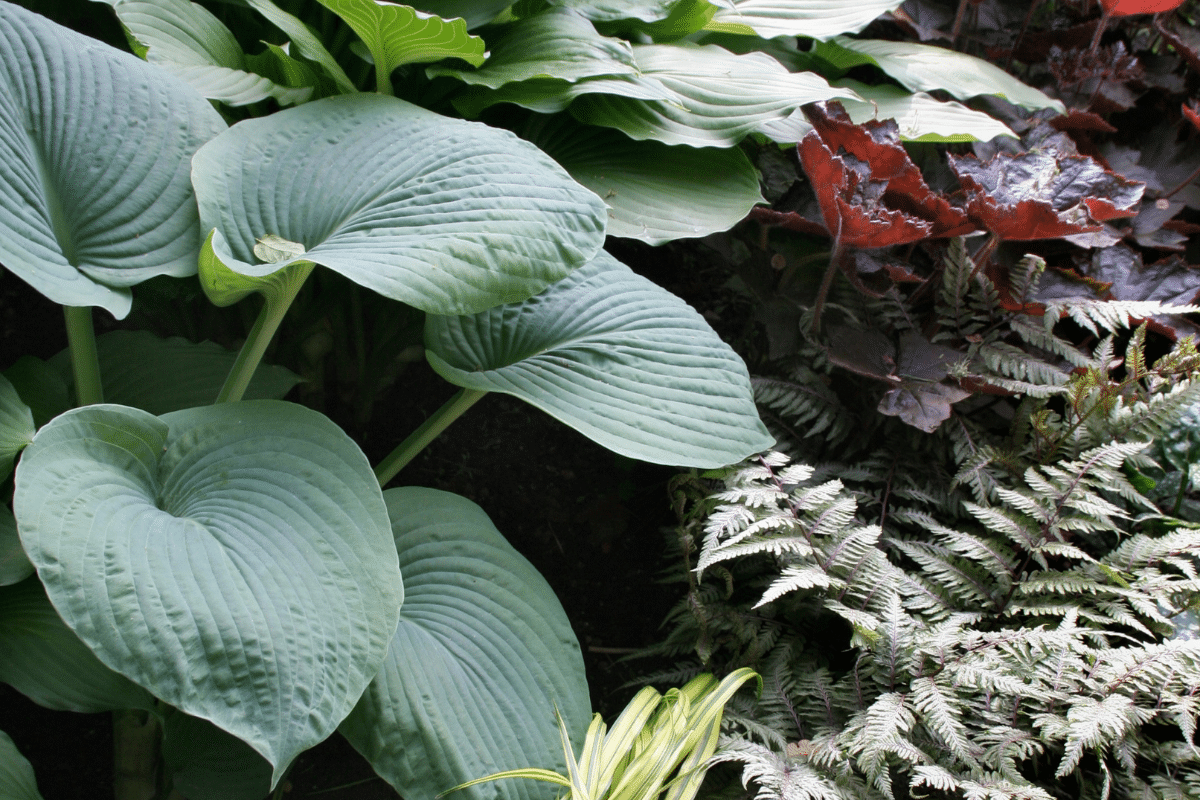
Many of our neighbors simply leave the low light areas of their gardens empty. But if you always want a full-looking landscape like I do, low-maintenance shade perennials are the key to your garden.
Since these plants thrive best in the shade rather than in areas with hours of sun exposure, they’ll make the perfect addition to any garden with empty, heavy shade areas waiting to be filled.
Lower Maintenance
I’ve taken care of all sorts of garden plants, and one of the primary things I noticed is that shade-tolerant plants are easier to maintain than sun-loving varieties.
Perennial plants that prefer full to partial shade require less frequent watering than those that thrive in full sun. This is because shady areas of your garden retain moisture better.
On top of that, shade plants are less prone to scorched leaves and other heat-related diseases, making it super easy to maintain their healthy-looking appearance.
Increased Plant Diversity
Many gardeners prioritize sun-loving plant varieties. So, by incorporating shade plants in your garden, you’ll significantly enhance the diversity of your landscape, making it more unique than others.
Stunning Foliage
To absorb as much light as possible, perennials for shade conditions often have large, vibrant leaves, making them some of the best plants to cover the ground space in your garden. From leaves shaped like hearts to foliage with unique colors such as purple and pink, you’ll surely find shade-tolerant plants that perfectly fit your garden’s aesthetic.
Non-allergenic Plants
The most common allergenic plants that tend to make your nose red in the early spring are sun-loving varieties.
Hence, by incorporating shade perennials, you’ll create a more allergy-friendly environment for your family and community.
Although, some of these plants can still trigger allergies, so, if you specifically want non-allergenic types, research each plant to verify whether it’s hypoallergenic.
Top 5 Low Maintenance Shade Plants
Hydrangea
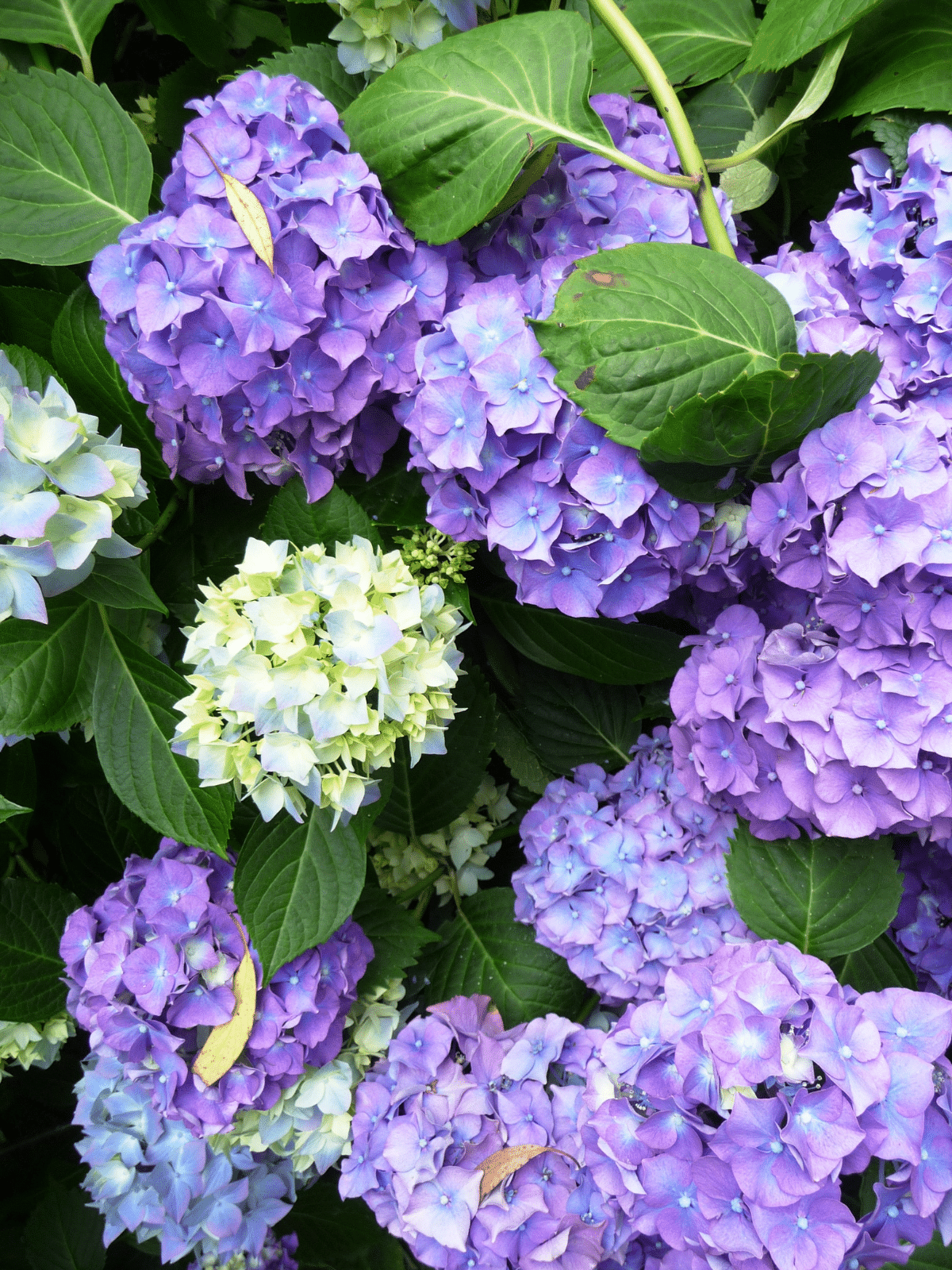
If you want your garden to be filled with eye-catching bloom colors, Hydrangea is a must-have flowering perennial. During spring or early summer, these shrubs will welcome you home with clusters of white, blue, pink, or purple flowers that stand out among other foliage plants.
Hydrangeas can reach up to 15 feet in height. But despite their size, these shrubs are extremely easy to care for. Plant them in moist, well-draining soil areas that can be reached by the morning sun but are shady in the afternoon.
Note that Hydrangeas may not bloom in fully shaded areas. So, placing them in locations that receive 4-6 hours of sunlight per day is recommended.
Hosta
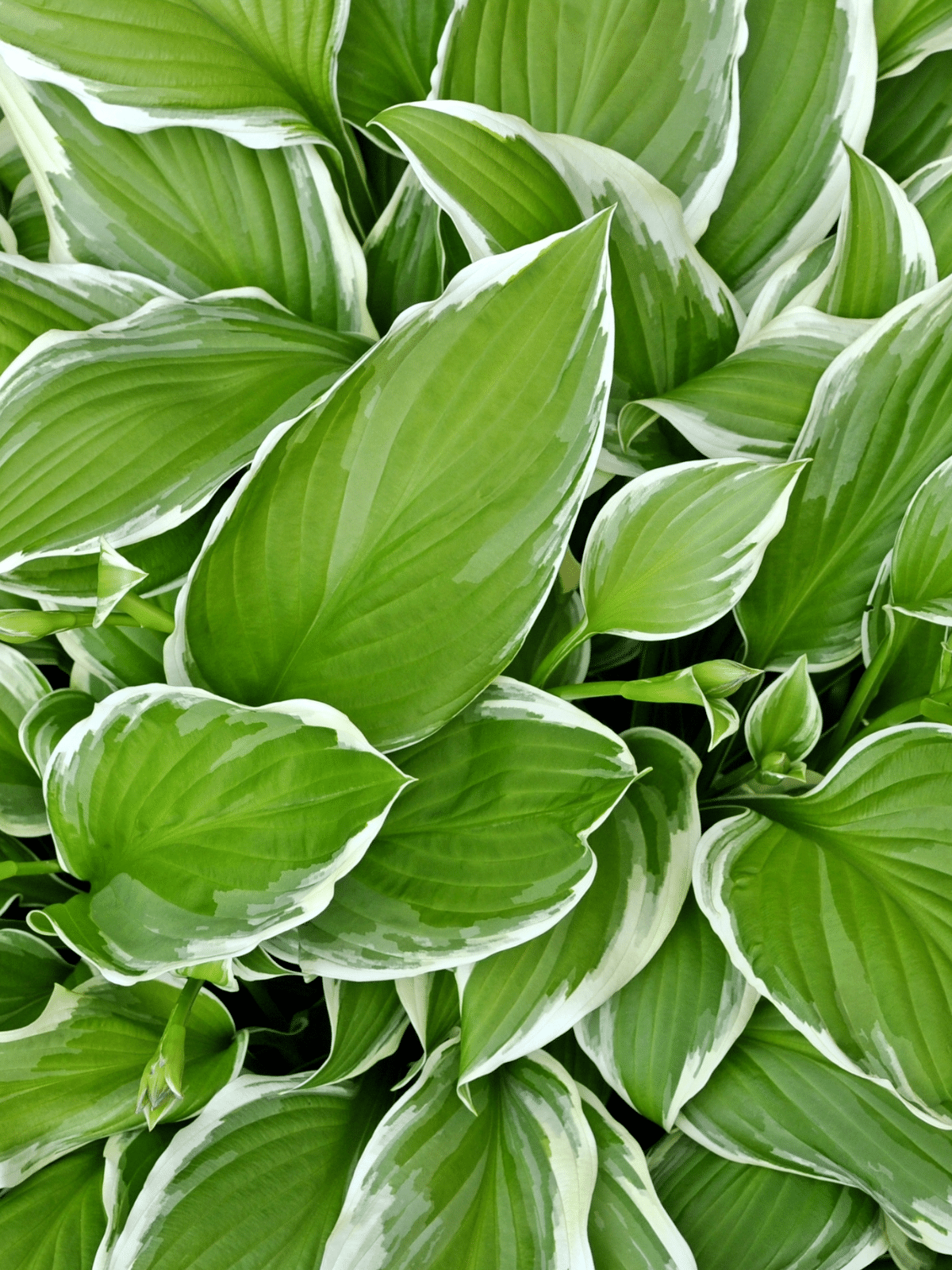
Hostas are some of the best low-growing plants to add in areas with varying light conditions. They can tolerate both deep shade and part shade, giving you more flexibility in placing them throughout your garden landscape.
Despite being a flowering plant, Hostas are best known for their various leaf patterns, colors, shapes, and textures. So, you’ll have options to select the best Hosta variety that suits your garden style.
Consider planting Hostas in raised beds, but make sure you don’t overwater, as these plants grow best in moist, but unsaturated soil.
Coral Bells
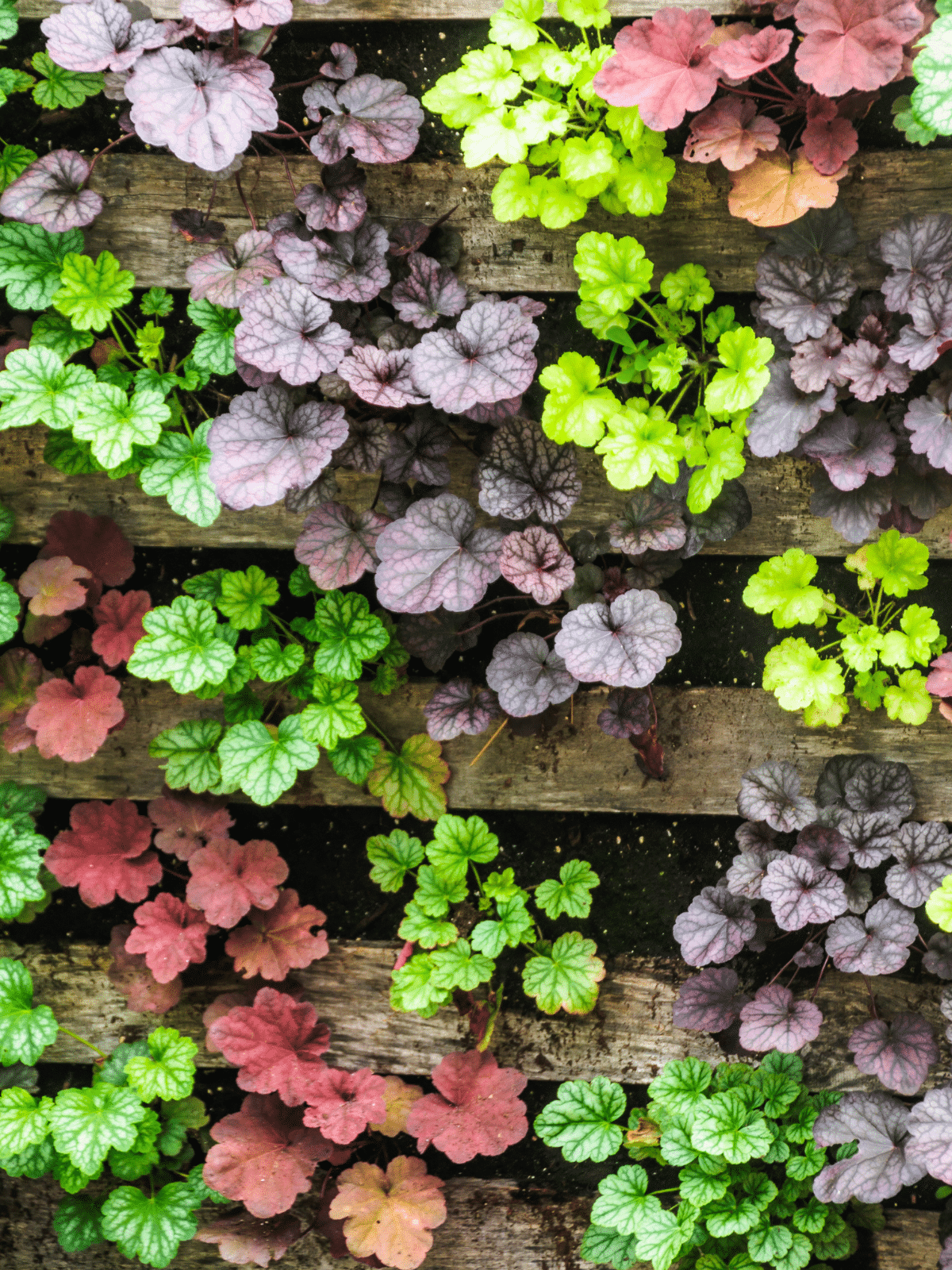
Plant enthusiasts, like myself, really want to get their hands on coral bells, one of the most diverse plants when it comes to foliage colors. Coral bells come in about every color in nature, with blue being the only exception. So, if you want an autumn-colored garden outside of the fall season, a collection of these plants will do the trick.
Like most perennials for shade, coral bells grow best in well-drained but moist soil. Trim away their dead leaves in spring and keep them well-mulched to ensure the best growth for these plants.
Bleeding Heart
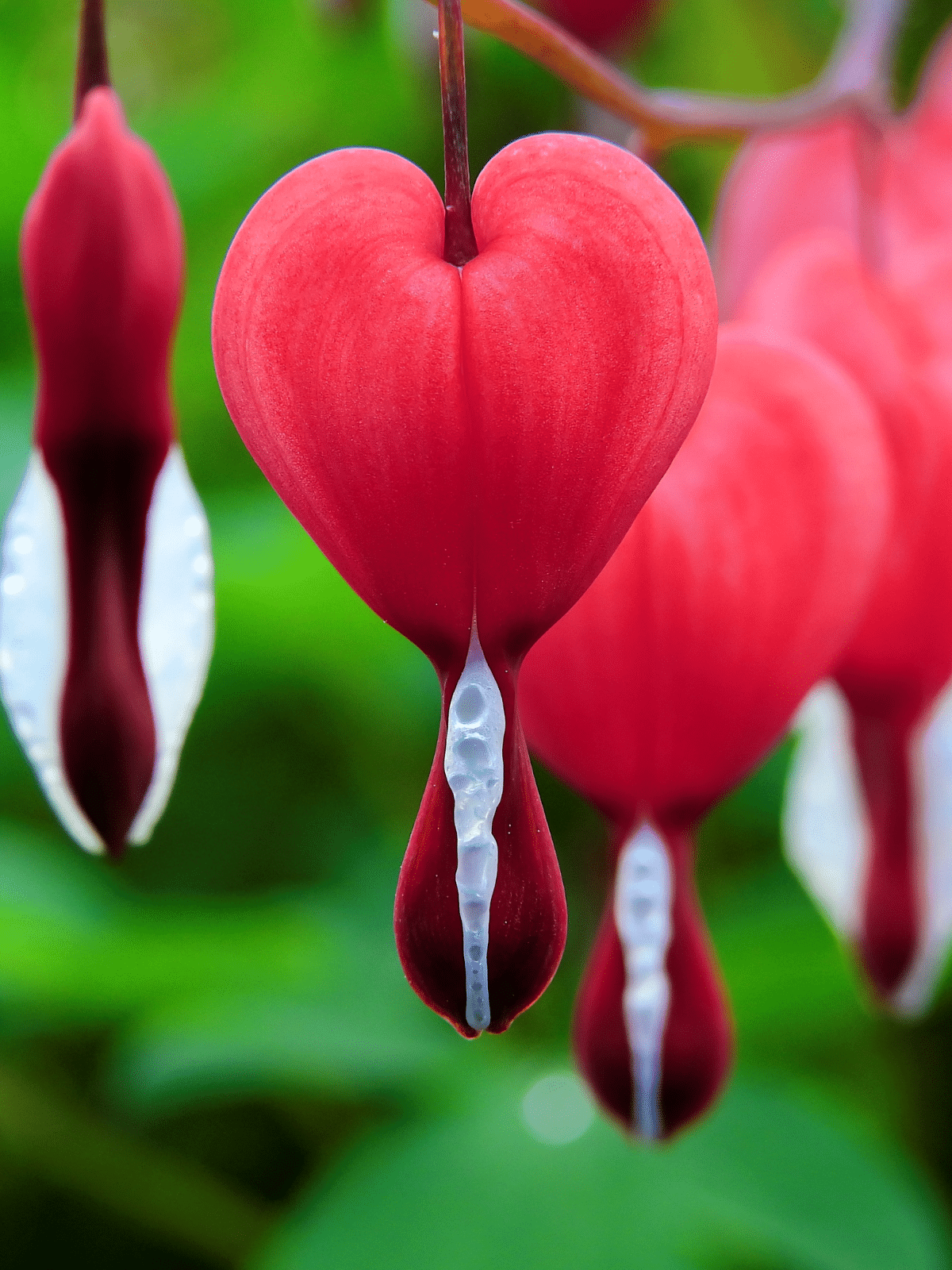
Famous for their heart-shaped blooms, Bleeding Hearts are some of the best woodland plants that thrive in dappled shade. Their pink, white, and red flowers grace your garden for several weeks during the spring season.
Make sure you plant Bleeding Hearts in areas without direct sunlight, and position them in well-draining and fertilized soil. Keep them away from strong winds as their delicate heart-shaped flowers fall off easily.
Ferns
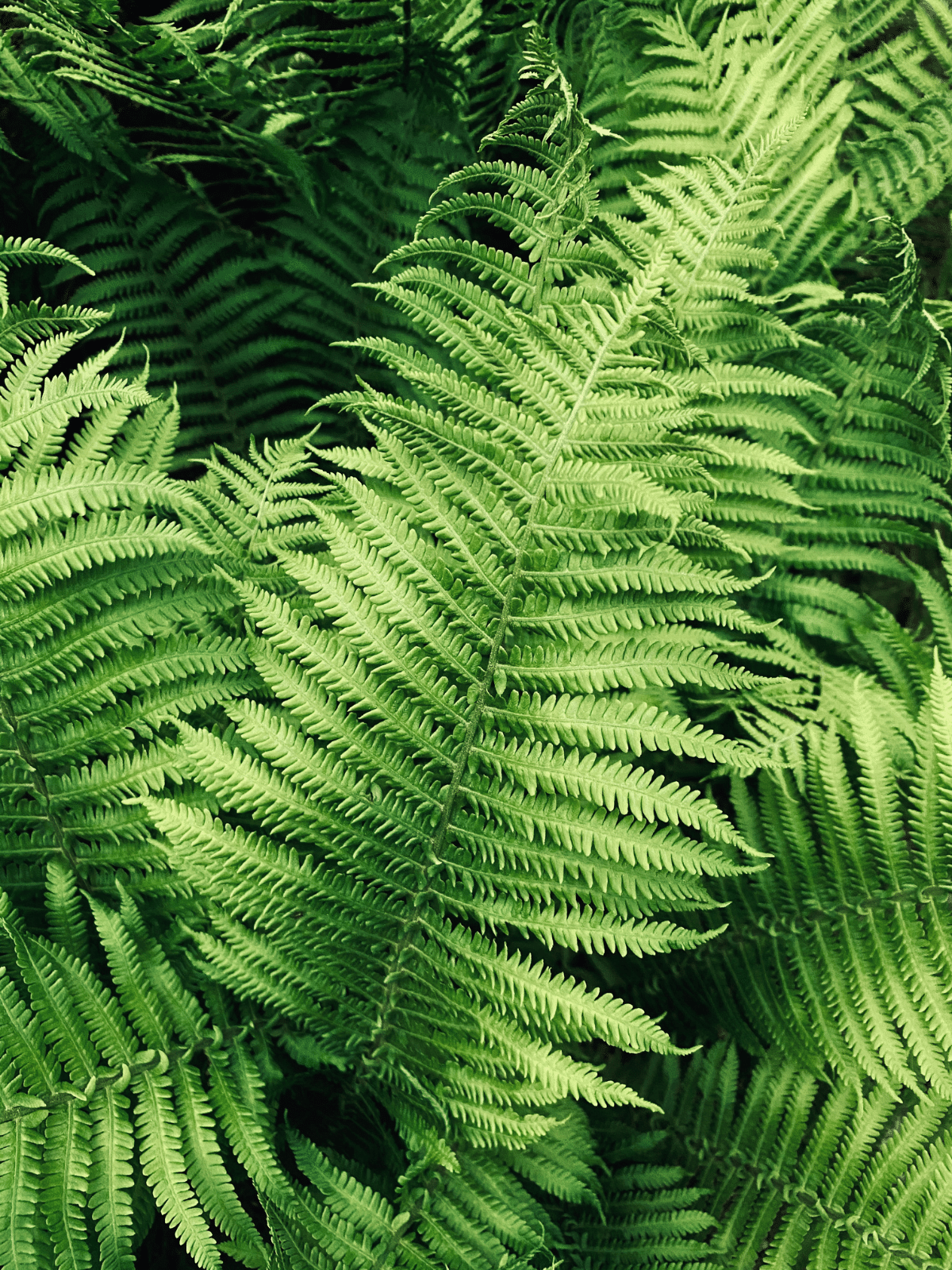
One of the easiest ways to enhance the greenery in your garden is by incorporating ferns. With dark green leaves, these plants come in various textures, shapes, and sizes, making them versatile and easy to fit in your garden.
While ferns are known for thriving in locations with lots of indirect sunlight, they are also very shade tolerant. Just keep the soil moist, and fertilize regularly, and these plants will grow healthy-looking leaves.
Research the maturity size of your newly-bought ferns before planting them. Despite varieties looking extremely similar, some can reach over 60 feet, while others barely grow beyond 1 foot in size.
You wouldn’t want to end up with a massive fern that takes over your entire garden, or a tiny one that gets lost among other plants.
Tips for Planting And Maintaining Shade Plants
Planting Tips
Know The Maturity Size
Some shade-loving plants may scorch, wilt, or die off when exposed to direct sunlight. Therefore, it’s crucial to determine whether your mature plants will fit within a shaded location before planting them.
Measure the width of your garden’s low-light location, and then research the maturity size of your shaded plants. Make sure that the maturity size is less than or equal to the width of your garden. This way, you won’t overcrowd your lawn or risk other sections of your plants getting affected by the sun.
Work The Soil
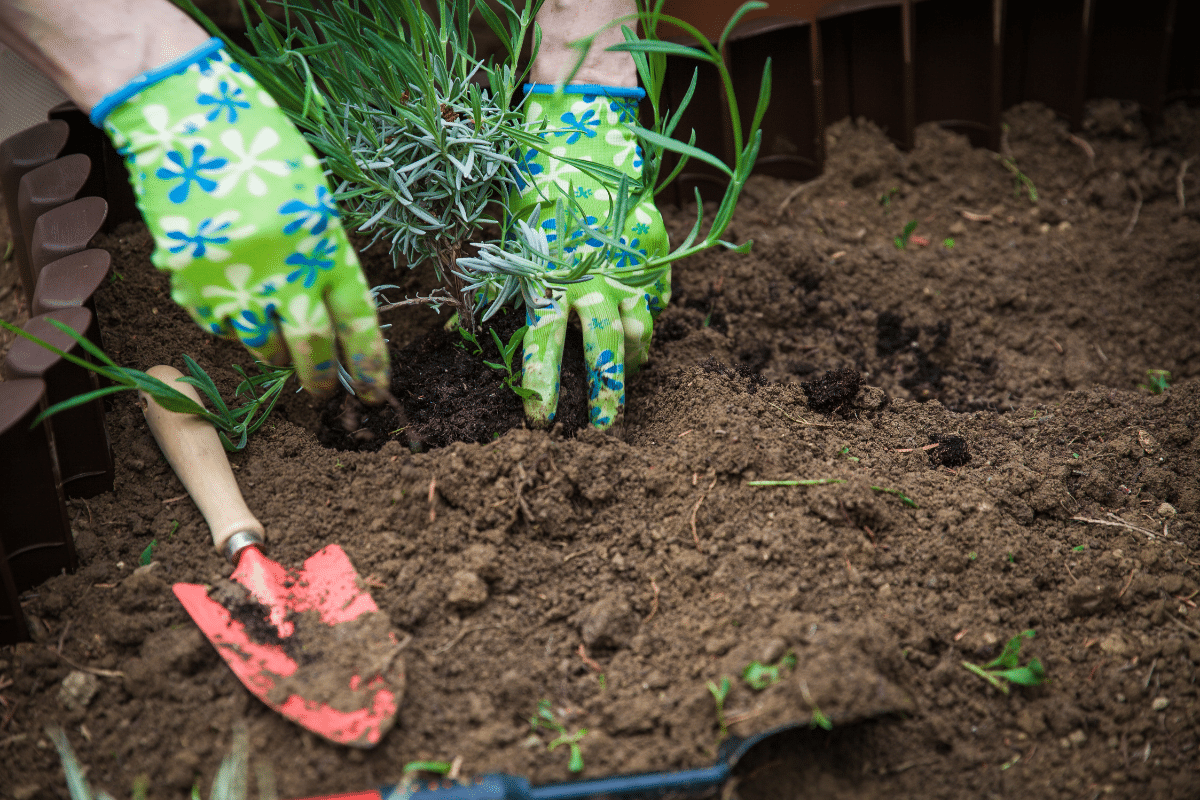
Most shade-loving plants prefer well-draining, moist acidic soil packed with organic matter. To ensure the healthiest plants possible, amend your soil before planting.
If you’re experiencing drainage problems, consider building raised beds to improve water flow. Additionally, apply mulch to the entire soil area to provide insulation for the roots of your plants.
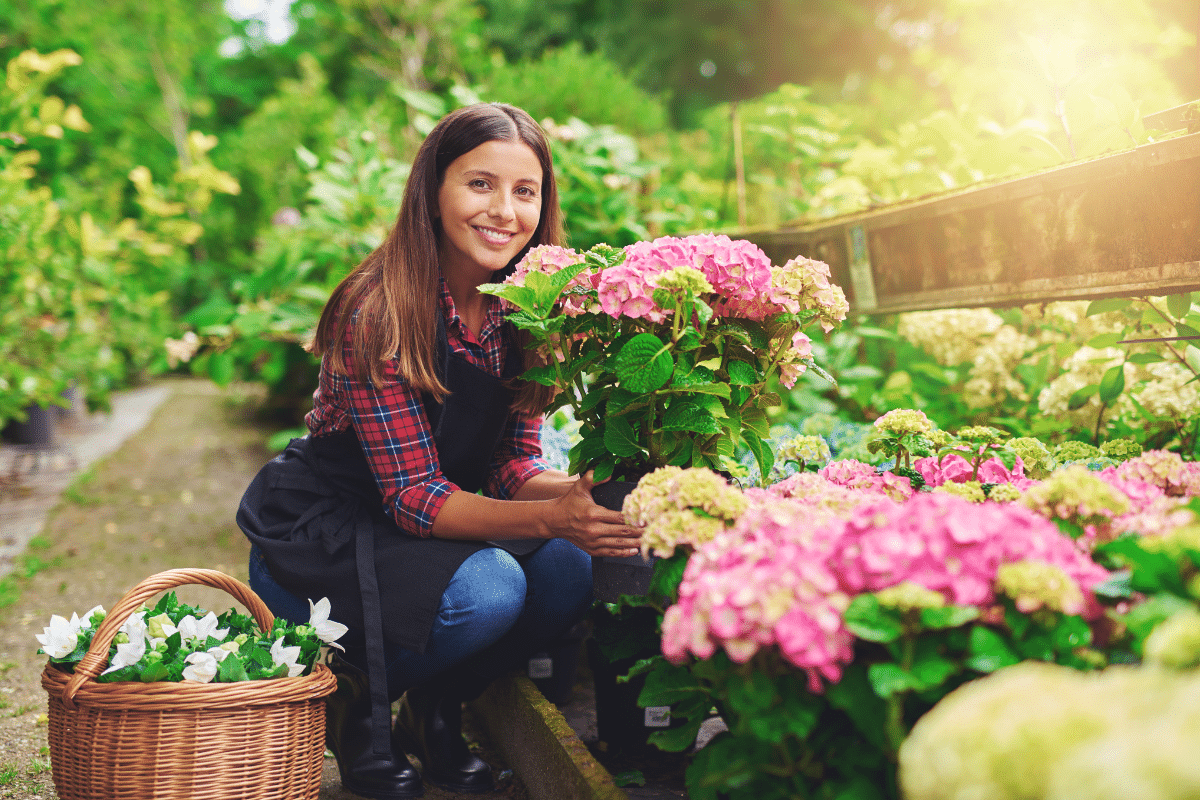
Choose The Right Time To Plant
It’s best to plant in spring or fall, away from the extensive heat of summer. Both of these seasons offer mild temperatures that are neither too hot nor cold, allowing perennials to thrive with little to no extra attention.
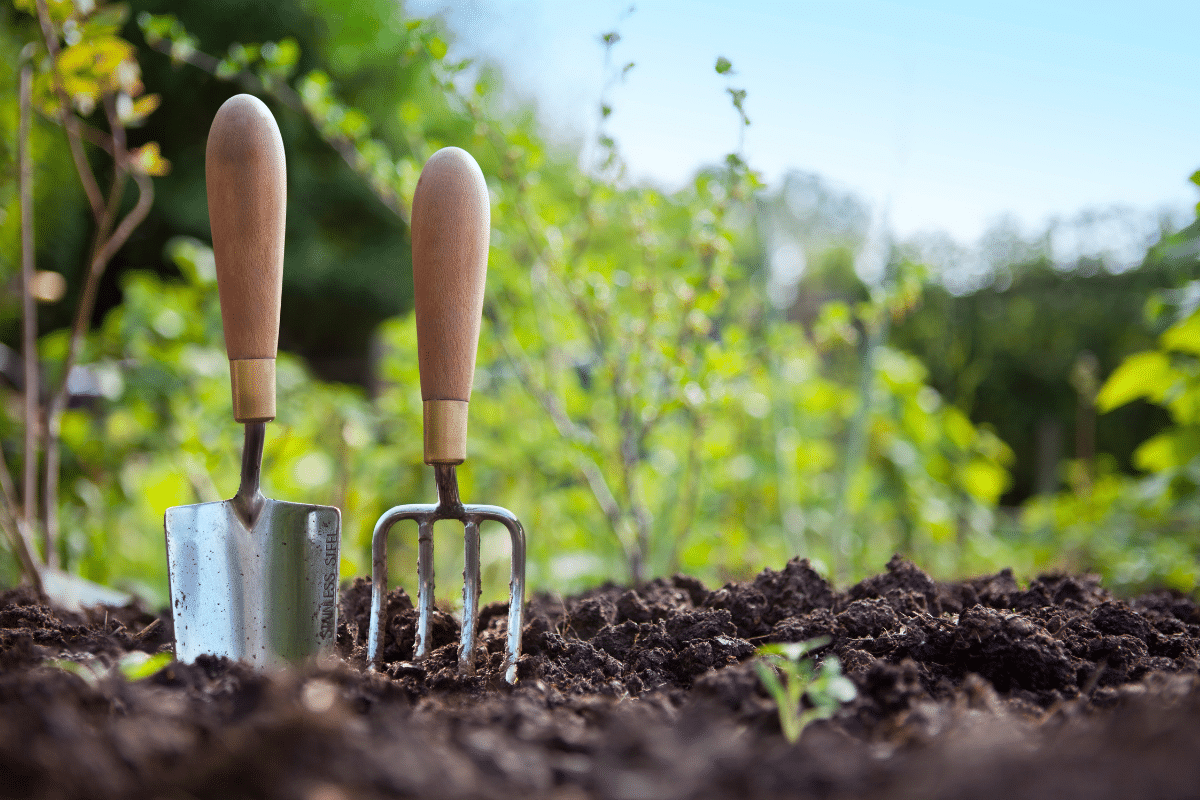
Know The Different Shade Levels
Gardening involves different shade levels, and some plants only thrive when planted in a specific shaded environment. You should know the level a plant requires before planting it.
The table below can help you identify what level of shade your garden has.
| Light Level | Amount of Sunlight Daily |
| Light or Part Shade | 3 to 6 Hours |
| Full Shade | 3 Hours |
| Deep Shade | Little To No Sunlight |
| Dappled Shade | Filtered Light Through a Canopy |
Maintaining Tips
Don’t Overwater
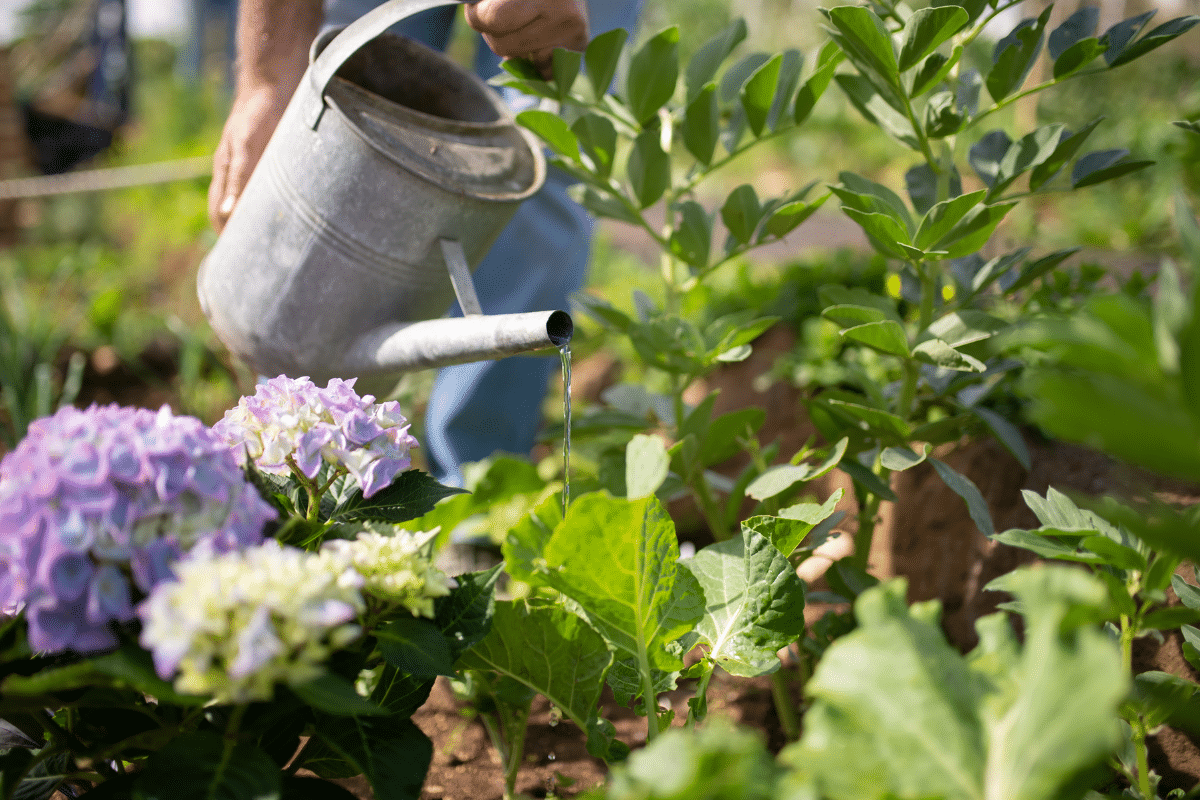
Most shade plants prefer moist soil, but they can suffer from diseases when overwatered consistently. So, know how much water each plant needs and accommodate accordingly.
If you live in rain-prone areas, you won’t need to supplement the watering of most plants. However, if the weather is dry, it’s best to water them once a week.
Protect Them From Wind
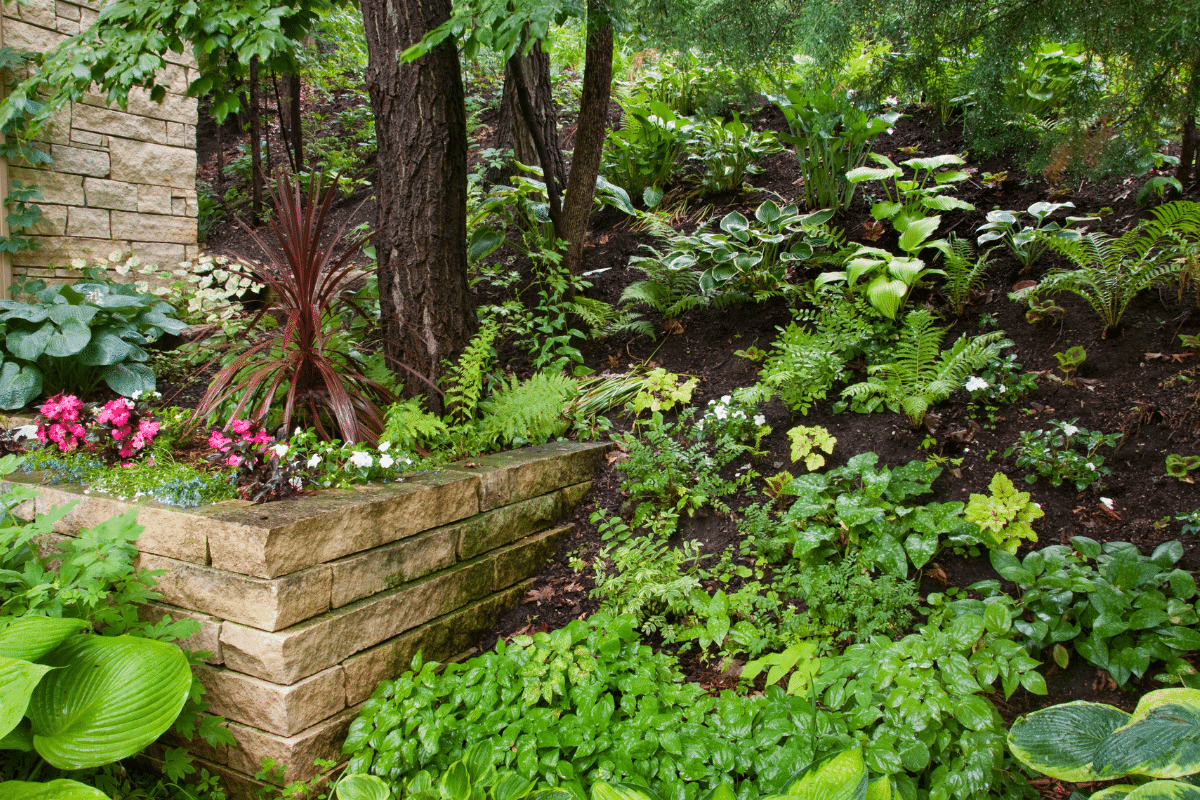
Plants for shade are generally hardy and require little maintenance. However, they can be vulnerable to strong gusts of nature’s wind, especially the flowering varieties.
If you live in an area prone to strong winds, provide a protective barrier for your plants. Plant them beside trees, walls, or other tall structures, if you don’t want to invest money in making a windbreaker.
Beware Of Pests
Shade plants love moist soil and dark areas. But you know who also loves those living conditions? Snails and slugs. These pests feed on the leaves of your plants. So, if you start seeing them in your garden, set up proper measures to eliminate them.
FAQs
Some plants naturally adapted to lower light levels. These plants possess traits such as larger and more chlorophyll-rich leaves, which contribute to sustaining their growth and survival in such environments.
Yes, some plants have the ability to survive in shady environments. Many shade-tolerant species prefer limited sunlight and have developed mechanisms to capture and utilize the lower levels of light energy efficiently.
For these plants, using a fertilizer with equal balance ratios of nitrogen, phosphorus, and potassium is generally recommended. This type of fertilizer ensures growth and promotes overall plant health to help them survive in lower light conditions.
The fastest way to know if you’ve watered your plant enough is to stick your finger into the soil. Research the recommended watering depth for your particular plant. Then, using your fingers, assess the moisture level to see whether the plant has been adequately watered.
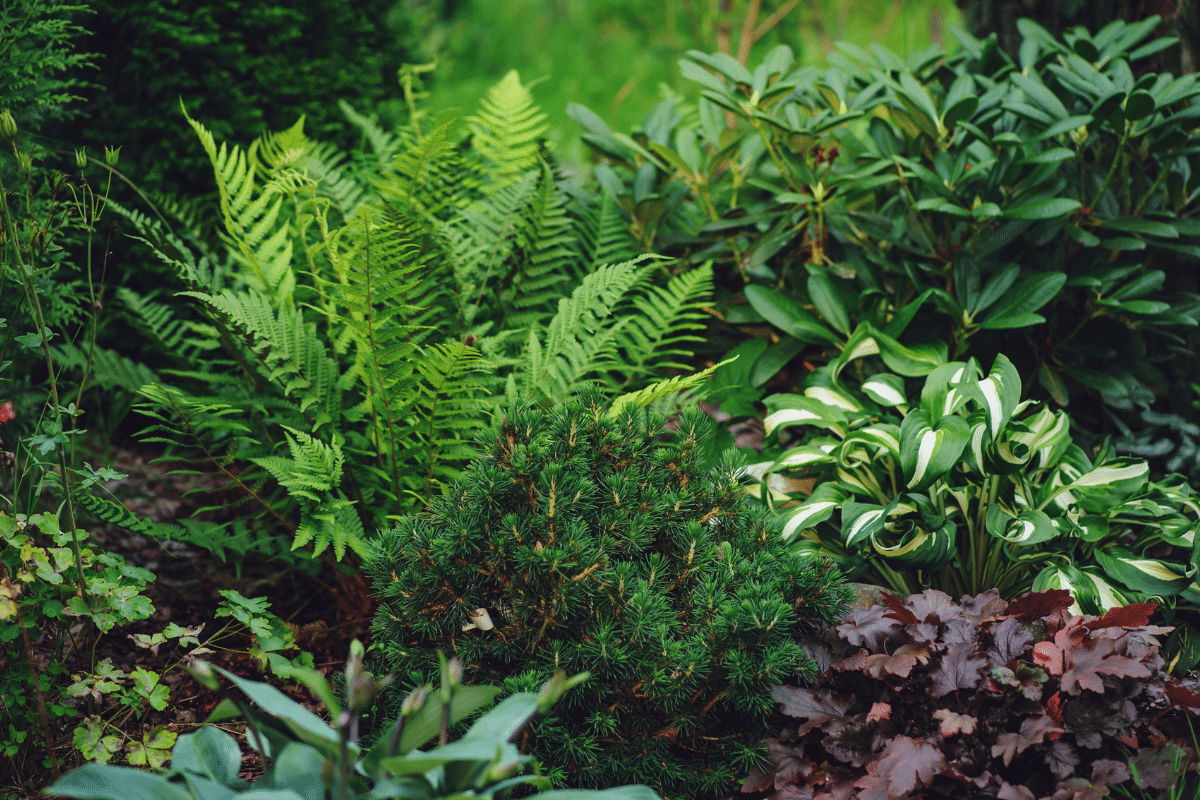
Shade plants are some of the best additions to your shaded garden. They bring color, texture, depth, layers, and vibrant flowers without requiring excessive maintenance. As a mom who’s always occupied with chores, these plants are lifesavers to having a healthy-looking landscape without demanding hours of my time each week. I highly recommend adding them to your growing plant family. Trust me. You won’t have regrets.
More Ideas for Easy Yard Care
If you love having a beautiful yard, but also have other things you like to spend your time and energy on, search the entire library of low maintenance landscaping tips:
- Best Low-Maintenance Bushes for Your Oudoor Landscape
- Evergreen Low Maintenance Plants
- Fast Growing Low Maintenance Hedge Plants
- Low Maintenance Evergreen Climbing Plants
- Low Maintenance Evergreen Plants for Pots
- Low Maintenance Evergreen Shrubs
- Low Maintenance Landscaping Ideas
- Low Maintenance Perennials
- Low Maintenance Trees
- Must-Have Low Maintenance Shade Plants

